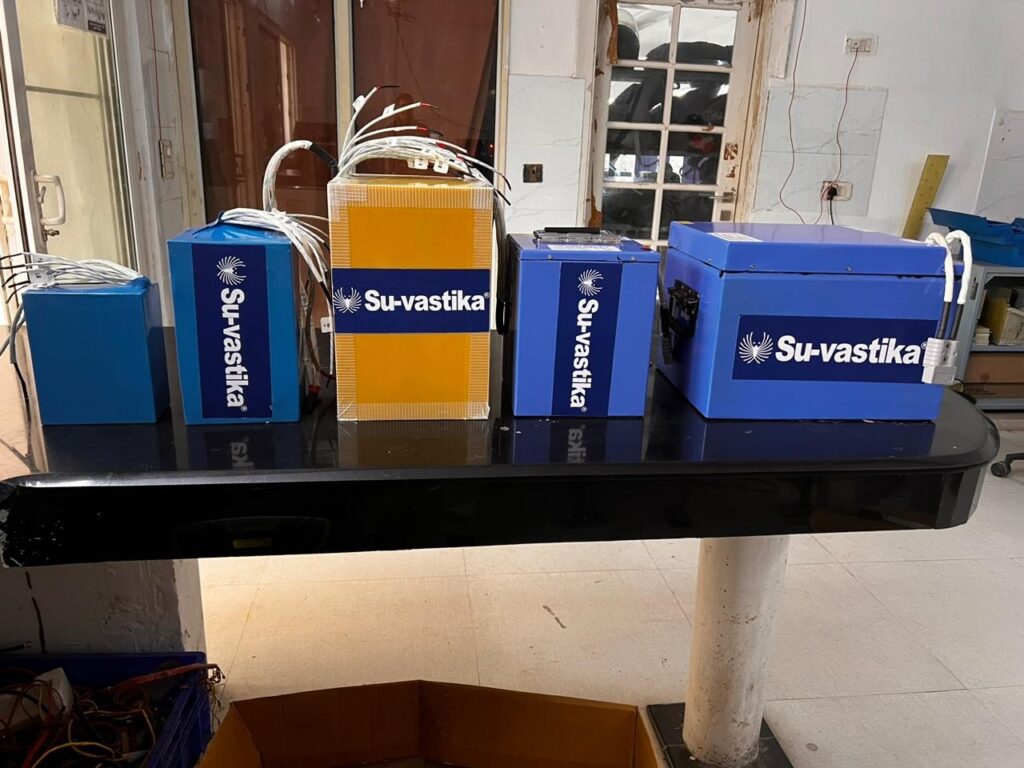Why is the future of all vehicles with LiFePO4 battery?
Why is the future of all vehicles with LiFePO4 battery? A lithium iron phosphate (LFP) battery is a type of lithium-ion battery that charges and discharges at a faster rate. It is a rechargeable battery with a cathode of LiFePO4 and an anode of graphitic carbon with a metallic backing.
LiFePO4 batteries have a lower energy density and operate at lower voltages than lithium-ion batteries. They have a lower discharge rate and flat curves and are safer than Li-ion batteries. Lithium Ferro-phosphate batteries are another name for these batteries.
The history of LiFePO4 batteries
John B. Goodenough and Arumugam Manthiram invented LiFePO4 batteries. They were among the first to identify lithium-ion battery materials. Because of their penchant for early short-circuiting, anode materials are unsuitable for lithium-ion batteries.
Scientists discovered that cathode materials are superior to lithium-ion battery cathodes. This is most noticeable in LiFePO4 battery variants. They improve stability and conductivity, as well as a variety of other aspects.
LiFePO4 batteries are now ubiquitous and have numerous applications, including use in boats, solar systems, and vehicles. LiFePO4 batteries do not contain cobalt and are less expensive than most alternatives. It has a longer shelf life and is non-toxic.
LiFePO4 batteries are made up of more than just connected cells. They also have a system that keeps the battery within safe limits. A battery management system (BMS) protects, controls, and monitors the battery to ensure safety and extend battery life.
Despite being more tolerable, lithium iron phosphate cells are prone to overvoltage during charging, which reduces performance. The cathode material could potentially deteriorate and lose its stability. The BMS regulates each cell’s output and maintains the battery’s maximum voltage.
Undervoltage becomes a serious issue as the electrode materials deteriorate. If the voltage of any cell falls below a certain threshold, the BMS disconnects the battery from the circuit. It also acts as a backstop in an overcurrent condition and will shut down its operation if short-circuited.
LiFePO4 batteries are incompatible with wearable devices such as watches. They have the lowest energy density of any lithium battery. They are, however, best suited for solar energy systems, RVs, golf carts, bass boats, and electric motorcycles.
The advantages of LiFePO4 batteries
Low Cost
LFP batteries are made from iron and phosphorus, mined on a massive scale and cheaply. LiFePO4 batteries are estimated to cost up to 70% less per kg than nickel-rich NMC batteries. Because of its chemical composition, it is less expensive. In 2020, the lowest reported cell prices for LFP batteries fell below $100/kWh for the first time.
Environmental Impact Is Minimal
LiFePO4 batteries do not contain nickel or cobalt, which are costly and have a significant environmental impact. These batteries are rechargeable, demonstrating their environmental friendliness.
Increased Productivity and Performance
Because of their long lifecycle, LiFePO4 batteries are popular for applications requiring consistent and reliable power output over time. These batteries lose capacity slower than other lithium-ion batteries, which helps preserve their performance over time. They also have a lower operating voltage, which means less internal resistance and faster charge/discharge speeds.
Increased Security and Stability
LiFePO4 batteries are thermally and chemically stable, making them less prone to exploding or catching fire. LFP has one-sixth the heat output of nickel-rich NMC. Because the Co-O bond in LiFePO4 batteries is stronger, oxygen atoms are released more slowly if the battery is short-circuited or overheated. Furthermore, because fully charged cells contain no lithium, they are highly resistant to oxygen loss compared to the exothermic reactions seen in other lithium cells.
LiFePO4 batteries are approximately 50% lighter than lithium manganese oxide batteries. They weigh up to 70% less than lead-acid batteries. When a LiFePO4 battery is used in a vehicle, it consumes less gas and allows for greater manoeuvrability. They’re also small and compact, so they’ll take up less space on your scooter, boat, RV, or industrial application.
Non-Lithium Batteries vs LiFePO4 Batteries
Non-lithium batteries have several advantages, but they are likely to be phased out in the mid-term due to the potential of new LiFePo4 batteries, as older technology is more expensive and inefficient.
Batteries Made of Lead Acid
Lead-acid batteries may appear less expensive at first glance but are more costly in the long run. This is because they require more frequent maintenance and replacement. A LiFePO4 battery will last 2-4 times longer and requires no maintenance.
Batteries in Gel
Gel batteries, like LiFePO4 batteries, do not need to be recharged frequently and do not lose charge when stored. Gel batteries, on the other hand, charge at a slower rate. To avoid destruction, they must be disconnected as soon as they are fully charged.
AGM Battery
While AGM batteries are highly susceptible to damage when discharged below 50% capacity, LiFePO4 batteries can be completely discharged without risk of damage. It is also difficult to keep them going.
LiFePO4 Battery Applications
LiFePO4 batteries have a wide range of applications, including:
Fishing boats and kayaks: You can spend more time on the water with less charging and longer runtime. In high-stakes fishing competitions, less weight provides easier handling and a speed bump.
There is no dead weight to slow you down on mobility scooters and mopeds. Charge your battery to less than full capacity for spontaneous trips to avoid damaging it.
Solar configurations
Take lightweight LiFePO4 batteries with you wherever you go (even up a mountain or off the grid) to harness the sun’s power.
Commercial applications
Because these are the safest and toughest lithium batteries available, they are ideal for industrial applications such as floor machines, liftgates, and more.
In addition, lithium iron phosphate batteries power various other devices, including flashlights, electronic cigarettes, radio equipment, emergency lighting, and other items.
Wide-Scale LiFePO4 Implementation Possibilities
While LFP batteries are less expensive and more stable than alternatives, energy density is a significant barrier to widespread adoption. The energy density of LFP batteries ranges between 15 and 25%. This changes with thicker electrodes, such as those used in the Shanghai-made Model 3, which has an energy density of 359Wh/litre.
LFP batteries have more capacity than Li-ion batteries of comparable weight due to their long lifecycle. This means that the energy density of these batteries will gradually become more similar.
Automakers such as Ford, Volkswagen, and Tesla are increasingly using LiFePO4 technology to replace nickel or cobalt formulations. Tesla’s recent announcement in its quarterly update is just the beginning. Tesla also briefly updated the 4680-battery pack, which will have increased energy density and range. Tesla may also use “cell-to-pack” construction to condense more cells and accommodate lower energy density.
Despite its age, LiFePO4 battery cost reductions may be critical in accelerating mass EV adoption. Lithium-ion prices are expected to be close to $100/kWh by 2023. LFPs may allow automakers to emphasize factors other than prices, such as convenience or recharge time.
These batteries can outlast others by more than four times. They are safer and can reach up to 100% depth of discharge, allowing them to be used for a more extended period.
An Indian start-up is at the forefront of the LiFePO4 revolution
Indian start-up Su-svastika Solar has launched BESS Energy Storage Systems of variable capacities ranging from 10 KVA to 250 KVA, which can be put in series to increase the capacity size, say five units of 100 KVA can produce 500 KVA size BESS and the same way four no of 250 KVA capacity can produce 1MW of power.
Since these units are run on Lithium batteries, the backup time can be increased through the sizing of the battery bank. If we need more back in time, we can increase the battery bank size accordingly.
Since the battery bank is liFePo4 technology which has successfully seen results in more than the last decade, it is safe. It can be expected of a life cycle that no other battery technology has proven for more than a decade of usage.
As the power cuts have reduced in Indian cities drastically over the last five years, the general usage requires 2 hours of continuous backup time. As the ESS gets charged quickly, it can keep giving you backup and charging, giving 4 to 6 hours of backup in case of power failure at different periods.








Hi there! I realize this is sort of off-topic but
I needed to ask. Does building a well-established
blog such as yours require a large amount of work? I am brand new to operating a blog however I
do write in my diary on a daily basis. I’d like to start a blog so I
can share my personal experience and views online.
Please let me know if you have any kind of ideas or tips for brand new aspiring
bloggers. Thankyou!
I feel we should make pointers and then start writing on those pointers. It takes time to write good blogs initially but with the time you keep improving.
Thanks for sharing. I read many of your blog posts, cool, your blog is very good. https://accounts.binance.info/en-IN/register-person?ref=UM6SMJM3